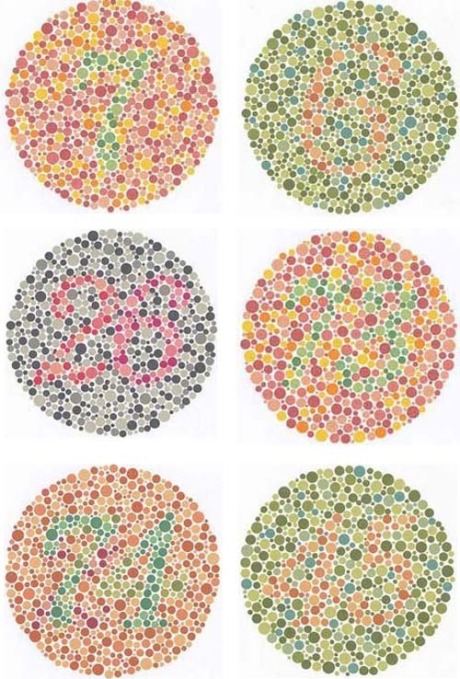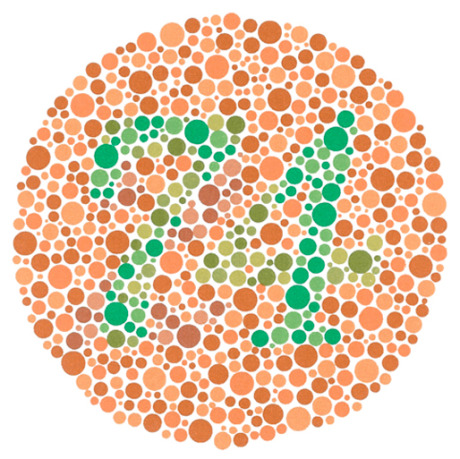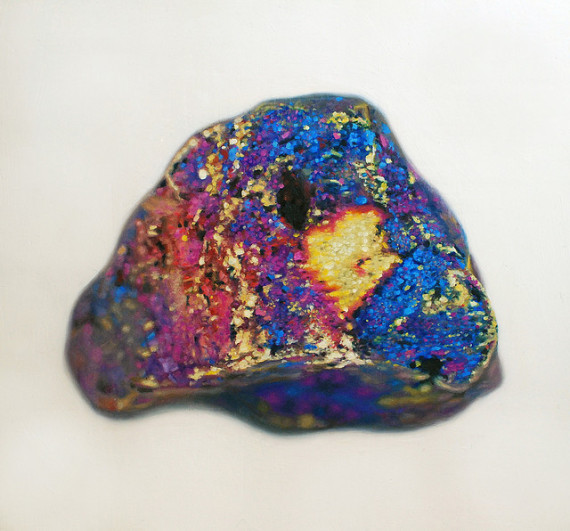Entries in Natural Philosophy (39)
The Shadowgraph
 Monday, January 10, 2011 at 12:21PM
Monday, January 10, 2011 at 12:21PM Schlieren photography is a visual process that is used to photograph the flow of fluids of varying density. Invented by the German physicist August Toepler in 1864 to study supersonic motion, it is widely used in aeronautical engineering to photograph the flow of air around objects. Its role is changing due to the increasing use of computational fluid dynamics, which reduces the need for all such experimental fluid flow measurement techniques.The basic optical schlieren system uses light from a single collimated source shining on, or from behind, a target object. Variations in refractive index caused by density gradients in the fluid distort the collimated light beam. This distortion creates a spatial variation in the intensity of the light, which can be visualised directly with a shadowgraph system.
Shadowgraph is an optical method that reveals non-uniformities in transparent media like air, water, or glass. It is related to, but simpler than, the schlieren and schlieren photography methods that perform a similar function. Shadowgraph is a type of flow visualisation.


TOOLS FOR URBAN NATURALISTS, PART 1
 Thursday, September 16, 2010 at 12:39AM
Thursday, September 16, 2010 at 12:39AM A quotidian scene from a parking lot in Los Angeles. A test of the macro capabilities of the iPhone 4 video camera.
Unseen Reliquaries
 Thursday, August 26, 2010 at 12:27AM
Thursday, August 26, 2010 at 12:27AM 
Tibetan Buddha statue made of brass (15th century). Photograph and a neutron radiogram. The radiogram reveals wooden objects and dried flowers hidden inside the statue. Neutrons easily pass through metals and reveal substances containing hydrogen. (Paul Scherrer Institut)
The Ishigara Color Test
 Thursday, August 19, 2010 at 1:37AM
Thursday, August 19, 2010 at 1:37AM The Ishihara color test is a test for color blindness. It was named after its designer, Dr. Shinobu Ishihara (1879-1963), a professor at the University of Tokyo, who first published his tests in 1917. It makes use of the peculiarity that in red-green blindness, blue and yellow appear remarkably bright compared to red and green.



 Art,
Art,  Design,
Design,  Natural Philosophy,
Natural Philosophy,  Optics
Optics  Shinobu Ishigara,
Shinobu Ishigara,  color blindness
color blindness The Impossibilities of Environmental Justice
 Tuesday, June 1, 2010 at 4:12PM
Tuesday, June 1, 2010 at 4:12PM 
Greenpeace worker Lindsey Allen walks past a pool of oil as she collects samples of oil that washed up along the mouth of the Mississippi River south of Venice, La. Wednesday, May 19, 2010. Oil from last month's Deepwater Horizon oil rig explosion in the Gulf of Mexico has started drifting ashore along the Louisiana coast. (AP Photo/Charlie Riedel)
*****
What constitutes a "crime against humanity"? When is an "ecological crime"? not a crime against humanity? These are questions I ask myself when attempting to understand the gravity and consequences of the ongoing Deep Horizon disaster in the Gulf of Mexico, because I am stunned by the absence of discussion of criminal liability for the responsible parties. I know that part of this silence is generated by a lack of established legal frameworks for determining criminal liability in such cases, let alone in actually holding trials and executing judgements.
For those who are curious, like me, crimes against humanity, as defined by the Rome Statute of the International Criminal Court Explanatory Memorandum,
are particularly odious offences in that they constitute a serious attack on human dignity or grave humiliation or a degradation of one or more human beings. They are not isolated or sporadic events, but are part either of a government policy (although the perpetrators need not identify themselves with this policy) or of a wide practice of atrocities tolerated or condoned by a government or a de facto authority. Murder; extermination; torture; rape and political, racial, or religious persecution and other inhumane acts reach the threshold of crimes against humanity only if they are part of a widespread or systematic practice. Isolated inhumane acts of this nature may constitute grave infringements of human rights, or depending on the circumstances, war crimes, but may fall short of falling into the category of crimes under discussion.
The Rome Statute has one paragraph that refers to environmental damages as war crimes: Article 8(2)(b)(iv):
Intentionally launching an attack in the knowledge that such attack will cause incidental loss of life or injury to civilians or damage to civilian objects or widespread, long-term and severe damage to the natural environment which would be clearly excessive in relation to the concrete and direct overall military advantage anticipated;
In a 2001 U.S Army Environmental Policy Report, the authors state that
There are three ways a case may come before the Court: referral by a State Party to the Statute; referral by the UN Security Council; or initiation of an investigation by the Prosecutor of the ICC.
For the court to have jurisdiction, several stringent conditions must be met. The act must be:
- Among “the most serious crimes of concern to the international community as a whole” (Preamble, par. 4, Doc. UN/A/CONF.183/9, 17 July 1998;
- The result of an attack specifically intended to create that damage; “collateral” damage would not come under the Court’s jurisdiction (in the words of one of the interviewees, the Statute “is about war crimes, not mistakes”);
- Launched with the knowledge that it would cause “long-term and severe damage to the natural environment” which would be “clearly excessive” to anticipated military gains; and
- If the above three conditions were met, the principle of “complementarity” would come into play. The ICC will complement national procedures, not replace them. If a country has legal mechanisms to address the crime, and they are functioning properly, the ICC would not have jurisdiction.
- All cases are filtered by a three-judge panel. If a series of frivolous cases flooded the court, they would not pass the panel.
Apparently, many suggestions have been made for the establishment of a specific statute and category for "Enviromental Crimes" to address those most aggregious actions which occurr outside of wartime and whose victims are not considered to be immediately "human". For instance, Mary Clifford proposed a definition of environmental crime in her 1998 book Environmental Crime, as
- A broad philosophical definition: An environmental crime is an act committed with the intent to harm or with a potential to cause harm to ecological and/or biological systems and for the purpose of securing business or personal advantage.
- A practitioners’ definition for a legal framework: An environmental crime is any act that violates an environmental protection statute.
Here's the problem: the rigid distinction between crimes against humanity and environmental crimes (and the relative devaluation of the seriousness of the latter) is absurd. Environments are — in a very tangible and real way — part of what constitutes "humanity" in an individual or group of individuals, and must be considered as such in the constitution of the legal subject. There are established legal dialogues and formulations of the environmental component of cultures (they exist, although they too are still underdeveloped and underrecognized) and yet when it comes to the conception of the "humanity" which is a victim of "crimes against humanity", the undeniable connections of the well-being of human with non-human species, geological and weather conditions with human populations, are ignored — or rather, left out because of their extreme unpopularity with status quo financial and economic international bodies. Is there anybody who lives anywhere near the gulf region who does not feel that the current Deep Horizon disaster constitutes "a serious attack on human dignity or grave humiliation or a degradation"? Is it not abundantly clear that vast numbers of people who live near coastlines that are being developed for off-shore drilling, oil refining and other potentially disastrous scenarios feel that their environmental rights are being degraded?

Despite the fact that environmental protection laws are often put on the books because of their seriousness and the potential effects on humans as well as natural environments and animals — including death in many cases — and despite the fact that it is possible and not uncommon for companies and governments to be held criminally responsible for injuries and deaths of individuals through their infringement of environmental protection laws — there is a massive disconnect between the specific case to the general or systemic which prevents the recognition of the severity and international character of systemic instances of massive environmental damage.

It is true that there are more complicated determinations to be made than others — the factors in determining the parties responsible in climate change and proving their criminality is a massive project (although by no means impossible). But the oil spill in the Gulf is as black and white as they come, if only you actually hold to the letter of the law. Officials within the Obama administration (previous administrations are not exempt, merely not of immediate concern), the EPA, the MMA British Petroleum, Halliburton, Transocean, Chevron, ExxonMobil and other institutions are — without a doubt — guilty of crimes against humanity.

The president and his administration continue to tolerate and condone the systemic practices of massive environmental degradation which kills and injures humans and environments alike. I agree that boycotting BP and other companies makes sense for concerned individuals looking for ways to make a posititve difference in the course of their daily lives. I agree that voting against policies and politicians who support these practices makes sense in the short term. Unfortunately, this is not enough. According to the Institute for Southern Studies, the immediate-to-near term fluctuations in brand loyalty and party politics do not threaten entrenched off-shore oil enonomics:
While the short-term picture for offshore drilling is cloudy, there are few signs that the energy industry intends to move away from offshore drilling -- including deepwater exploration, like that which the Deepwater Horizon rig was conducting before its fateful April 20 explosion.
That's because the offshore drilling industry operates on a different, longer-term cycle than politics. Due to the immense cost and scale of offshore drilling projects, the companies involved operate on multi-year plans and leases, which they have no intention of abandoning after one disaster, even if it is the biggest oil spill in history.
In the short-run, the energy industry is bracing for a series of setbacks: lawsuits, regulations, even temporary drilling bans. For example, on Monday, the Obama administration revealed the details of a six-month moratorium on deepwater drilling (defined as deeper than 500 feet), including some 30 exploratory wells.
But six months is a short time horizon for deepwater offshore drilling projects, which take years to get off the ground. With shallow water drilling showing diminishing returns, the major oil companies view deepwater drilling a fixed part of their future: Deepwater rigs capable of drilling 3,000 or more have increased 43% since 2006.
It is long past the time to consider the implications of not addressing the systemic practices that threaten, harm and kill humans and their environments — not only in protests, boycotts, direct action and democratic referendums — but in the theory and practice of international law.
A Walk Through H
 Sunday, May 2, 2010 at 4:14PM
Sunday, May 2, 2010 at 4:14PM A Walk Through H: The Reincarnation of an Ornithologist (1978)
by Peter Greenaway
Duration: 41 minutes
As the camera pores over 92 mixed media pictures hung in a gallery (all painted exquisitely by Greenaway himself), a pedantic narrator describes his mysterious journey to H, using the pictures as maps. Subtitled The Reincarnation of an Ornithologist, this film seems to be concerned with the migration of a soul (to Heaven or Hell) following the migratory paths of birds (which feature prominently) - but along the way it takes in the curious provenance and intrepretation of each painting, and it documents a bewildering intrigue between the narrator, his mentor Tulse Luper and his rival van Heuten (keeper of the owls at the Amsterdam Zoo).
Via UBUWEB
A Primer on Symbiogenesis
 Monday, April 12, 2010 at 4:34AM
Monday, April 12, 2010 at 4:34AM Lynn Margulis discusses her work as a synthetic thinker in the biological, chemical, physical and geological sciences, and describes some of the background of her work on the theory of symbiogenesis, as well as Gaia theory with James Lovelock and Carl Sagan. I find her work to be underrecognized outside of the sciences, in particular in the discourse of human evolution and mimetics, which relies on the outdated and dubious philosophies of Richard Dawkins and other classical Darwinists. Her work should be of the utmost interest to the philosophies of identity and information ecology (mimetics).
From the Institute for Science, Engineering and Public Policy
Lynn Margulis
Distinguished University Professor in the Department of Geosciences, University of Massachusetts, Amherst, is a member of the National Academy of Sciences and the Russian Academy of Natural Science. She received a National Medal of Science from President Clinton in 2000.
Her books include What is Life?, What is Sex?, Slanted Truths (all co-authored with Dorian Sagan) and Symbiotic Planet.
THE ENDOSYMBIOTIC THEORY
Dr. Margulis has proposed that eukaryotic flagella and cilia may have arisen from endosymbiotic spirochetes, but these organelles do not contain DNA and do not show any ultrastructural similarities to any prokaryotes, and as a result this idea does not have wide support. Margulis claims that symbiotic relationships are a major driving force behind evolution. According to Margulis and Sagan (1996), "Life did not take over the globe by combat, but by networking" (i.e., by cooperation, interaction, and mutual dependence between living organisms). She considers Darwin's notion of evolution driven by competition to be incomplete.
SYMBIOGENESIS
Symbiogenesis is a theory of evolution. It argues that symbiosis is a primary force of evolution, because acquisition and accumulation of random mutations or genetic drift are not sufficient to explain how new inherited variations occur. According to this theory, new cell organelles, new bodies, new organs and new species arise from symbiosis, in which independent organisms merge to form composites. This challenges some standard textbook ideas of how evolutionary change occurs. To some degree, Darwin emphasized competition as the primary driving process of evolution, symbiogenesis emphasizes that co-operation can also be important to the process of evolution.
Symbiogenesis was first formulated by K. S. Mereschkovsky (1855-1921) in his 1926 book "Symbiogenesis and the Origin of Species" and by Ivan Wallin, in "Symbionticism and the Origins of Species". Ivan Wallin proposed in 1927 that bacteria might represent the fundamental cause of the origin of species, and that the creation of a species may occur via endosymbiosis.
In the late 20th century, Lynn Margulis claimed that microorganisms are one of the major evolutionary forces in the origin of species, endosymbiosis of bacteria being responsible for the creation of complex forms of life.
Margulis' theory of symbiogenesis
Margulis emphasizes that bacteria and other microorganisms actively participated in shaping the Earth, and helped create conditions suitable for life (e.g., almost all eukaryotes require oxygen, and only developed after cyanobacteria have produced enough atmospheric oxygen). She also argues that these microorganisms still maintain current conditions and that they constitute a major component in Earth biomass.
She showed that free-living bacteria and other microorganisms tend to merge with larger life forms, seasonally and occasionally, or permanently, perhaps under stress conditions. In the now generally accepted endosymbiotic theory, Margulis demonstrated that current plant cells resulted from the merging of separate ancestors, the chloroplast evolving from endosymbiotic cyanobacteria (autotrophic prokaryotes). A more recent additional hypothesis for the origin of some algal and plant cells is the fusion of Thermoplasma (sulfur reduction, fermentation), Spirochaeta (motility), alpha-proteobacteria (oxygen respiration) and Synechococcus cyanobacteria (photosynthesis).
Margulis claims that most of the DNA found in the cytoplasm of animal, plant, fungal and protist cells originated as genes of bacteria that became organelles, rather than from genetic drift or mutation.
Along these lines Margulis has argued that bacteria have the ability to exchange genes very easily and quickly, even between different species, by conjugation or through plasmids. For these reasons, the genetic material of bacteria is much more versatile than that of the eukaryote (see Primary nutritional groups for more on the extent of bacterial ability in terms of nutrition). Margulis claims that versatility is the process which enabled life to evolve so quickly, as bacteria were able to adapt to initial conditions of environment and to new changes by other bacteria.










